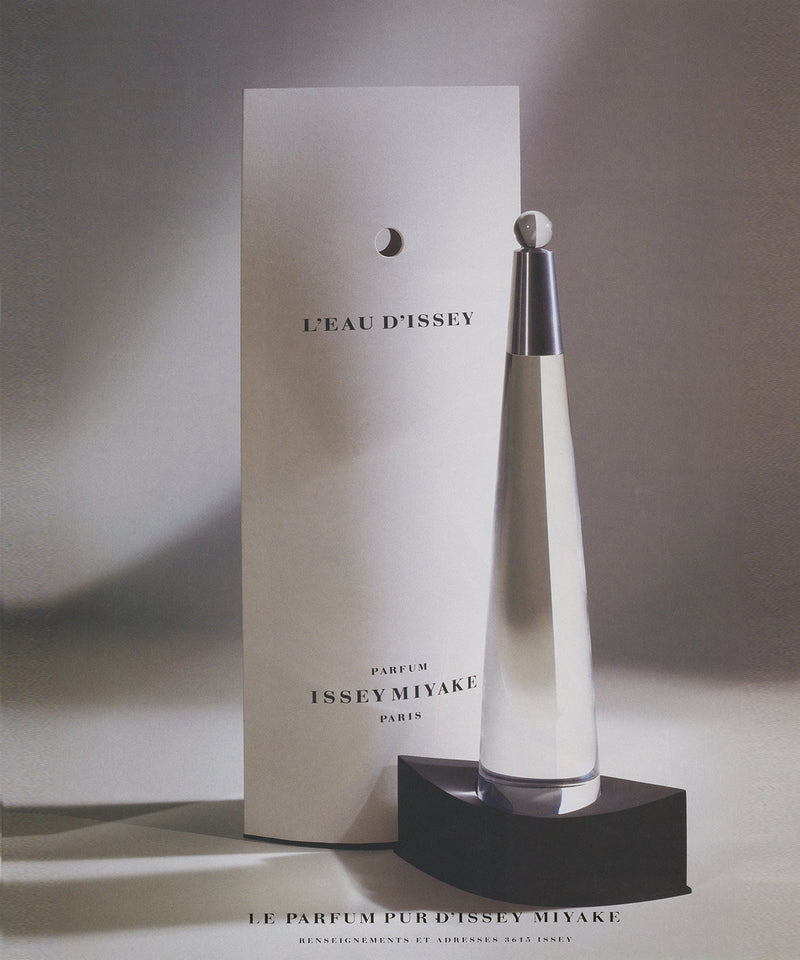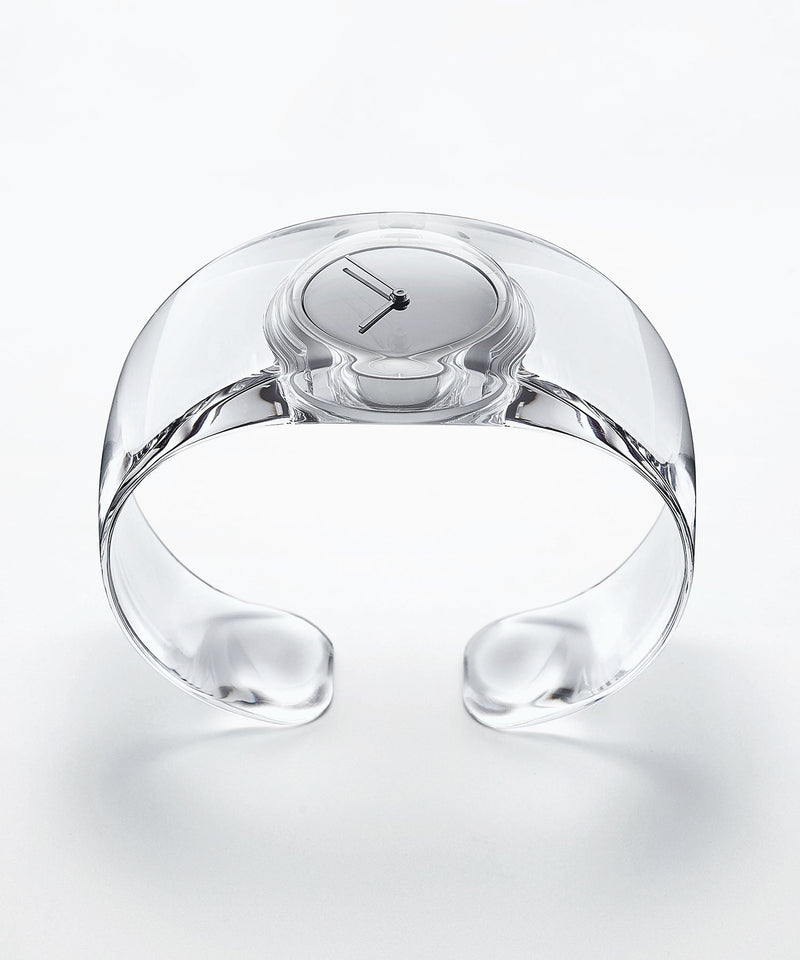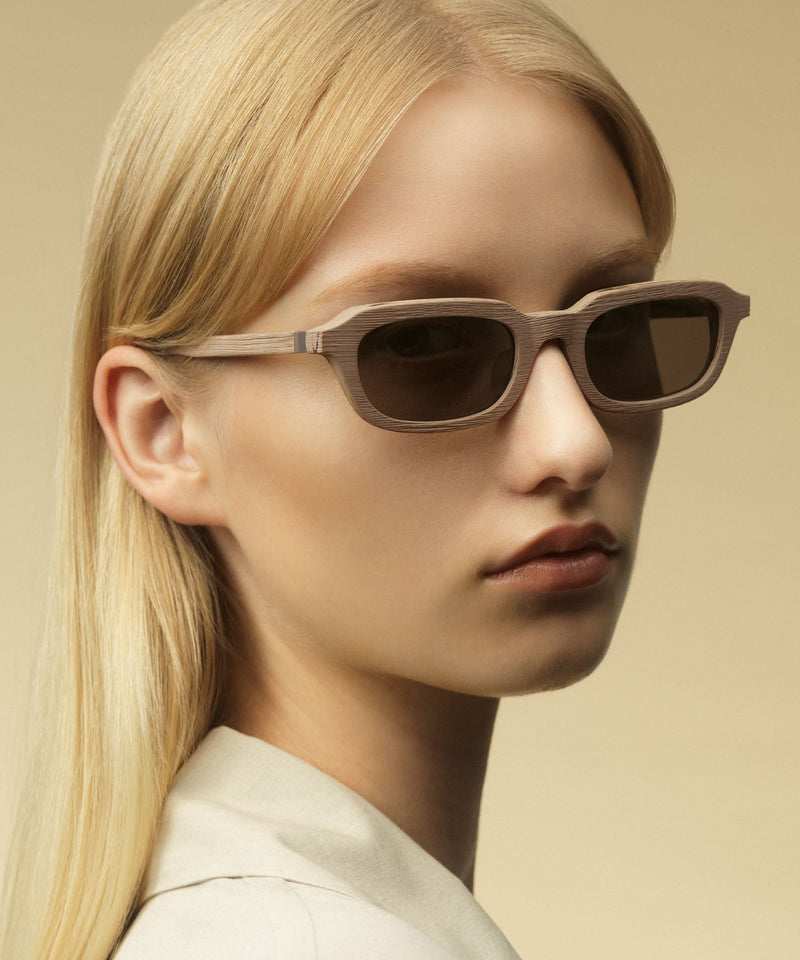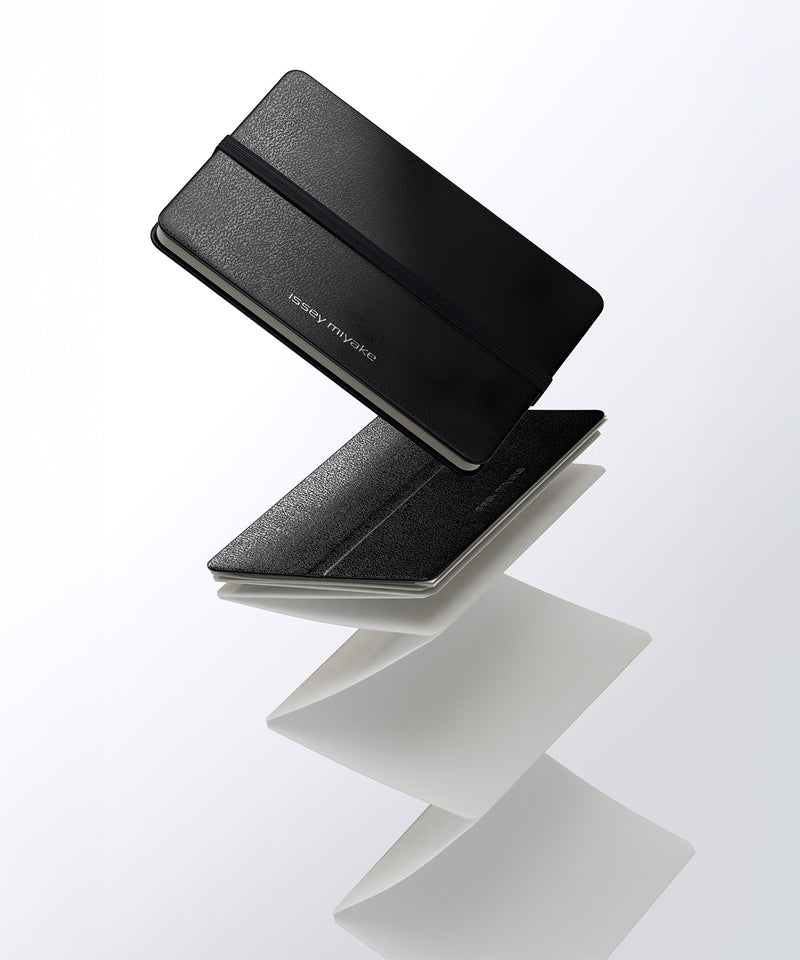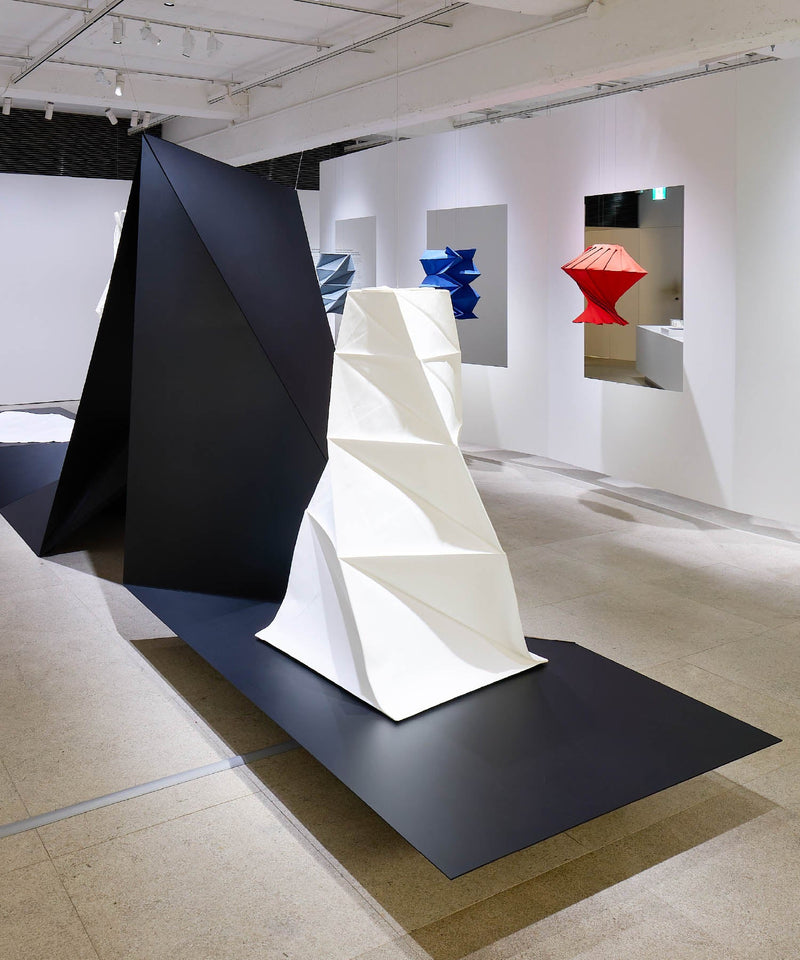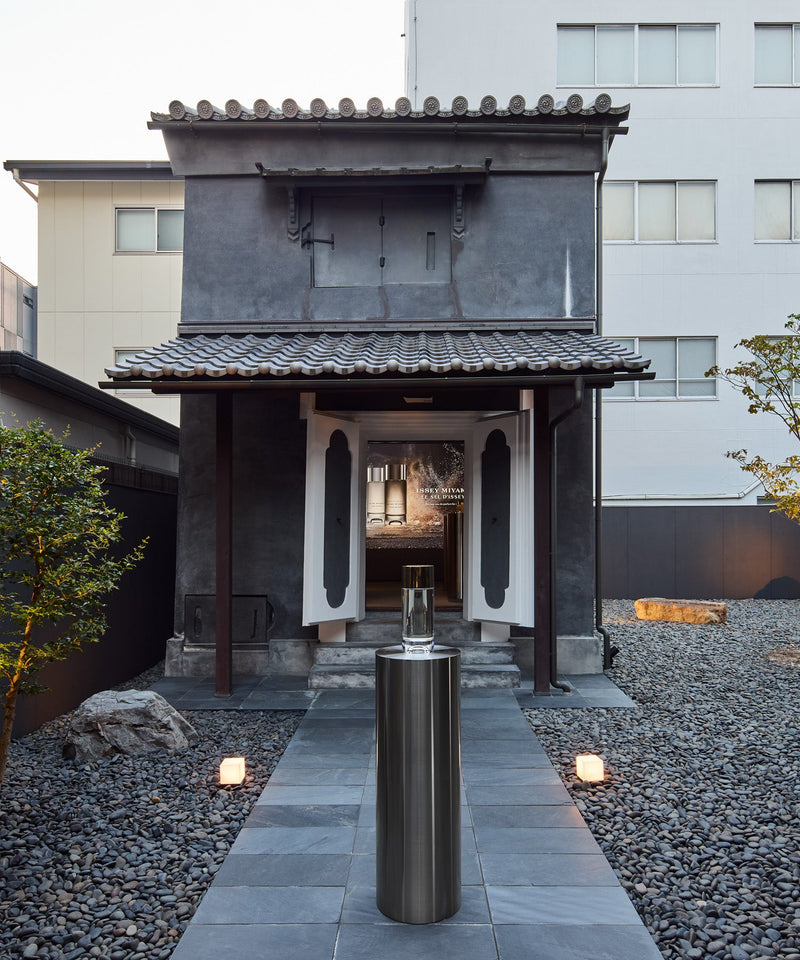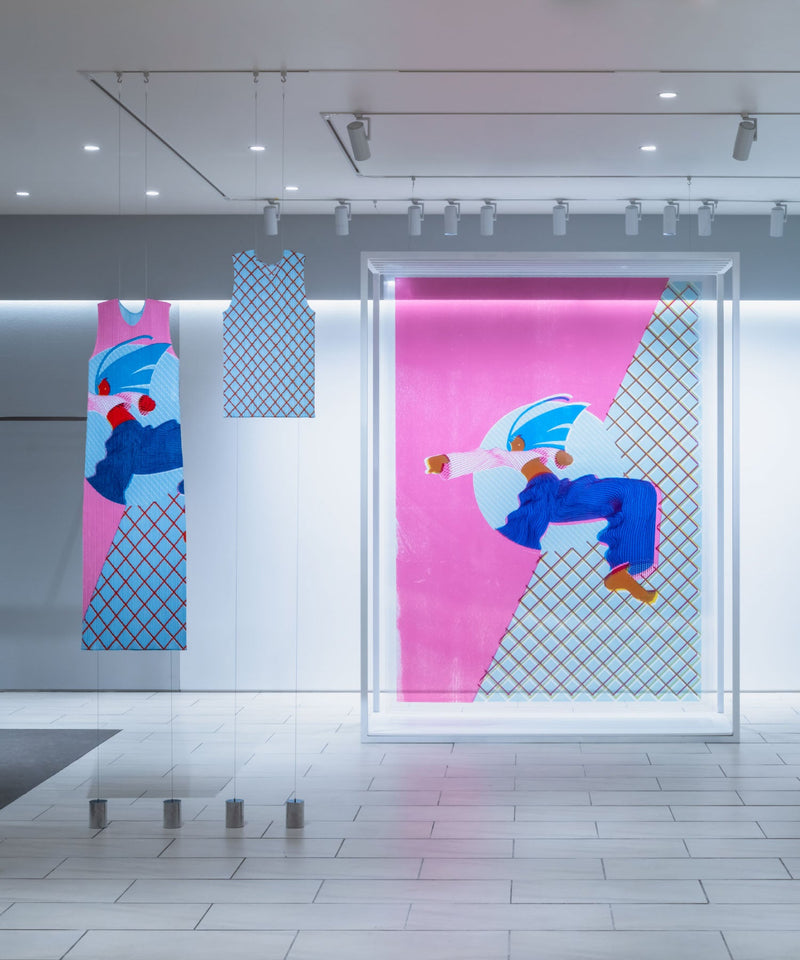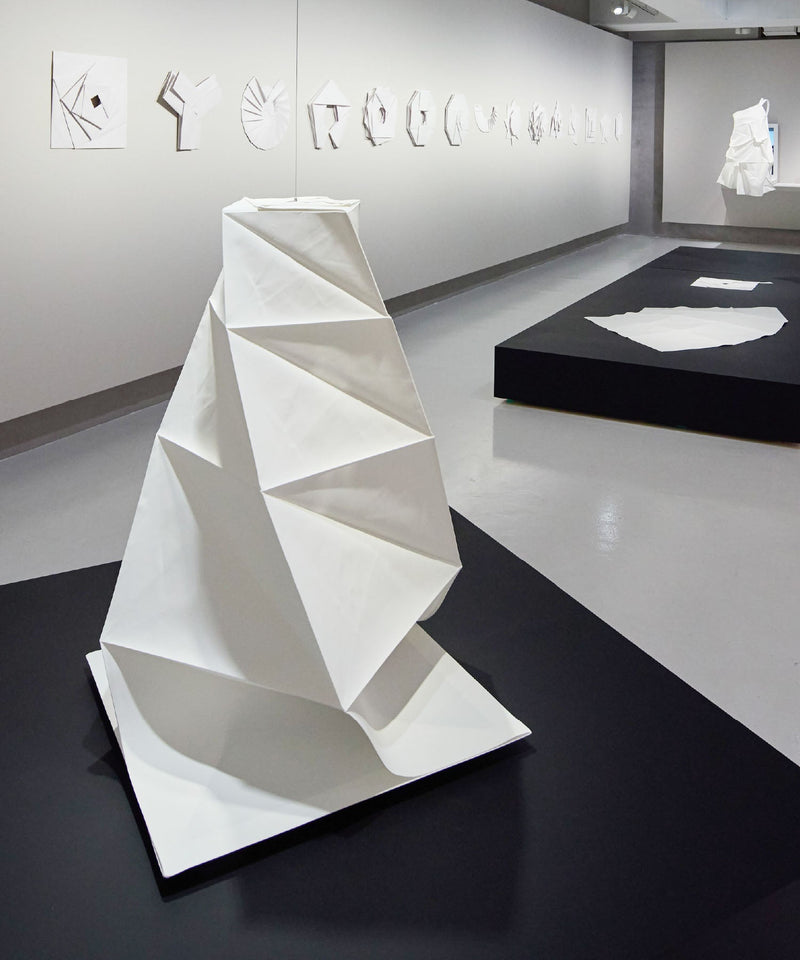Episode 6
“On a Single Plate”
by Yuri Nomura (eatrip)
It seems that delicious meals and comfortable clothing share some common ground. For example, both thrive on excellent materials, rare encounters with remarkable people, and meaningful communication. In the case of Yuri Nomura, who leads eatrip, it also involves creating spaces filled with an open atmosphere that everyone can enjoy, while connecting talents that might not otherwise meet. Yoshiyuki Miyamae, the designer of A-POC ABLE ISSEY MIYAKE, describes it as being “like a dish of unfamiliar food served on one single plate.” Here we bring you a conversation between these two individuals who have nurtured a long-standing friendship.
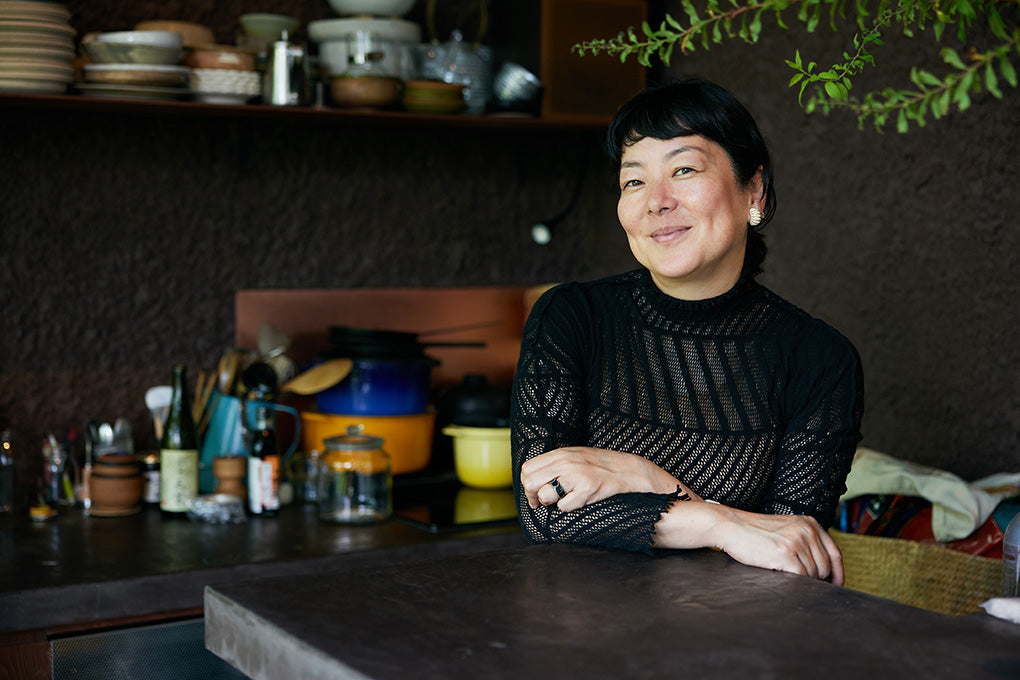
At GYRE in Tokyo’s Omotesando, on the 4th floor of this building lined with high-fashion boutiques lies a space that feels distinctly different, unpretentious and warm. This is eatrip soil, a grocery store opened in November 2019 by Yuri Nomura, the founder of eatrip. Nomura, known for championing producers, the wildness of nature, and the seasonal essence of ingredients, has created this store to convey the strength and intrinsic deliciousness of food.
Here, you will find an array of items such as seasonings and fermented foods delivered from across Japan, handmade tableware and cutlery crafted by artisans, and seasonal vegetables still bearing the soil they grew in. For eatrip, eating is synonymous with living, and purchasing something is akin to casting a vote, in other words, choosing the future. Although small in scale, the store only carries items made by producers with clear principles and conviction. In the adjoining garden, herbs and fruit trees are growing from soft soil.
After all, “life is a journey of eating.” This conversation took place at a small table tucked into a corner of the shop, where eatrip’s philosophy is thoroughly reflected. Bathed in gentle sunlight and accompanied by the quiet sound of records, the mood turned joyful as soon as the two met up.

Yuri Nomura (“Nomura” below): (Like Miyamae-san), I have also been wearing clothes from A-POC ABLE, and I find them incredibly practical. They are machine-washable, wrinkle-free, and lightweight. At first glance, I thought the designs were so edgy that they wouldn’t suit me. But after meeting Miyamae-san and starting to wear them, I was surprised at how liberating these clothes are for both myself and my body. They have taught me so much, about sensory experiences, efficiency and productivity in a positive way, and even the process of making things.
Yoshiyuki Miyamae (“Miyamae” below): Thank you, Yuri-san. I first met you back when I was working as a designer for Issey Miyake. During that time, I was constantly creating clothes to meet the twice-yearly collection schedule. Naturally there were moments of struggle and doubt. But in those times, talking with you often had a profound impact and later I’d find myself reflecting and thinking, “Oh, that’s what she meant.”
You deal with eating and cooking, and as you often say, food is essential for shaping both the body and the mind. On the other hand, I work with clothing and craftsmanship. While they seem different, I recall Miyake was once saying something similar, about how clothing can be comfortable for the body while also transforming the way one feels. It took me some time to fully grasp what that meant intuitively, but I feel like I have gained many insights from you.
Nomura: Thank you. I feel honored, though humbled as well.
Miyamae: Food connects people through cooking and eating and it also links us with soil and nature through ingredients. What I find amazing is how naturally you cross boundaries of fields and regions to expand these connections. Three years ago, I launched A-POC ABLE and through clothing and craftsmanship, I have been challenging myself to create connections and broaden possibilities in the same way.
In areas so closely tied to people’s daily lives, like food and clothing, it feels increasingly important to engage in such activities. I think this is also a key aspect of design work for the future. When I see the things you have done so naturally, I feel there is so much for me and the team to learn from.
In the end, the goal is simple: to enjoy life by listening to wonderful music, eating delicious meals, and wearing clothes you love. Of course, getting to that point requires immense energy for its preparation. That is the essence of making things and the most important part. In a time when it is easy to create something quickly, I feel it is vital to convey the energy that goes into the process beforehand. That is one of the reasons I wanted to meet and talk with you today.
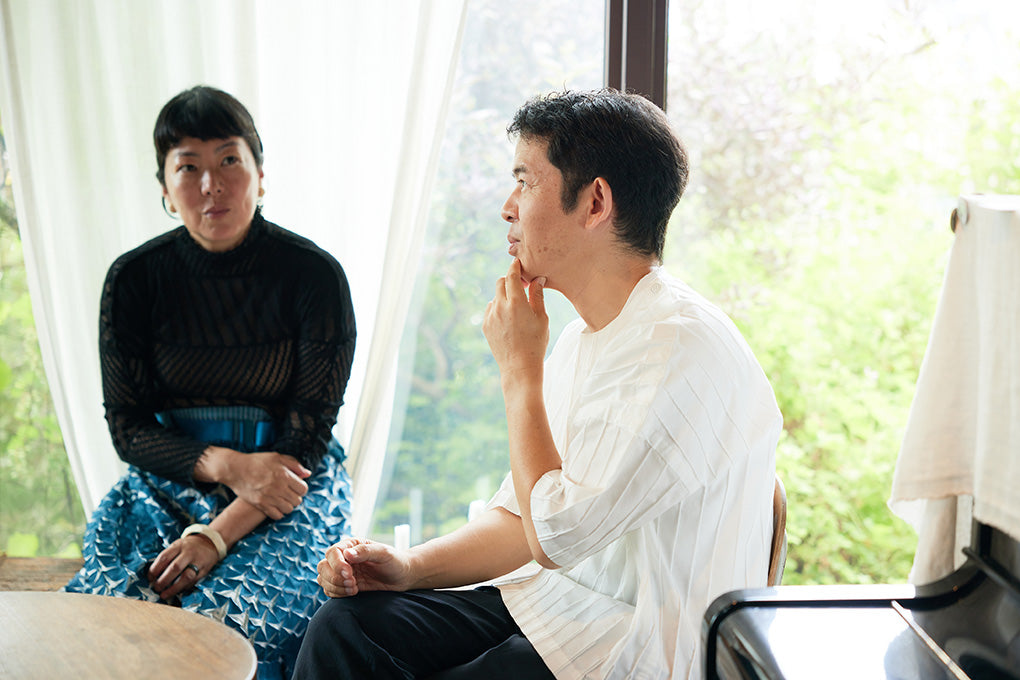
──In previous DIALOGUES sessions, Miyamae-san, you have often used food as a metaphor, haven’t you?
Miyamae: That might be true. When we discuss product lineups, I sometimes explain things using calories, even within the company (laughs). I’ll say, “This one is high in calories,” for example. I also think of everyday clothing in terms of staples like bread or miso soup. If we don’t consider how people’s consciousness and emotions evolve in their daily lives, designing clothes can easily become an act of self-indulgence. So thinking about what role clothing should play in someone’s life often leads me to these food metaphors. Food is something everyone can relate to easily.
Nomura: I see. Do you have products that are like plain white rice?
Miyamae: Yes I think so. Within Issey Miyake, for example, the PLEATS PLEASE ISSEY MIYAKE line might fit that description.
Nomura: Impressive! You had an answer ready straight away (laughs).
Miyamae: I often think of it as the ultimate onigiri (rice ball). Perhaps the BAO BAO ISSEY MIYAKE line fits this description too, as it is something you could use every day without getting tired of. It is something anyone and anywhere can wear or use. Like an onigiri, it is something that people all over the world would find satisfying. Or perhaps it is more like a French baguette, which is another universal staple.
Of course within each brand, we also have “onigiri-like products.” But we also create specialties, like a hamburger steak or other main dishes that reflect each brand’s strengths. Special clothing for celebratory days is essential too, but at the end of the day, we must always cook delicious rice. That’s something I want everyone to work together to create. However, cooking something so simple like rice perfectly is also the hardest thing to achieve.
Nomura: I see, so PLEATS PLEASE is like an onigiri. It’s true that cooking the perfect rice is incredibly difficult. From the type of rice to the water, to the method and tools used. It is something you do every day. Now the more you think about it, the more PLEATS PLEASE feels like rice to me (laughs).
Miyamae: Exactly, it’s like rice. It’s been made continuously since the 1990s and even now, people of all generations around the world wear it. It has become the “world’s rice.”
Nomura: That reminds me, when you were working on Issey Miyake collections, there was a time when you struggled with how to approach pleats, right?
Miyamae: Yes there was. Fans of the brand wanted pleated clothing, but the fashion world constantly demands something new. I also wanted to challenge myself with new ideas, so I went through a period of uncertainty.
Nomura: Then one day, you reached the realization that “white rice is white rice, and it’s forever rice,” didn’t you? I remember you saying that once you accepted that it’s our staple food, it brought you a sense of ease.
Miyamae: Yes, that’s right. I was able to face it honestly, and that allowed me to approach the collections with a fresh perspective.
Nomura: I really love that story because the question of what constitutes “new” is one I constantly wrestle with as well. Over time, I have come to think that it’s important for me to change, too. If I shift my perspective, anything can appear new. It’s not just about making the subject itself new, it’s about transforming yourself. If you do that, you can always experience things anew. Even with the same ingredients or cooking methods, you can continually encounter them in fresh ways.
Rice, in particular, is like that. Each time I cook it, I think, “Wow, this looks delicious!” or “I cooked it perfectly this time.” A shift in perspective can spark excitement. The same goes for other seasonal ingredients. When fava beans come into season, you think, “Wow, they’re amazing,” or with cucumbers, you realize how delicious they are. Rice is the same. It’s a living ingredient, so each time is like encountering it for the first time. Each season brings its own newly-harvested and best moments. It’s always a once-in-a-lifetime experience.
──Looking at your work with eatrip, whether it’s your activities, events, or the eatrip soil store, it feels similar to the way A-POC ABLE builds teams and approaches work. Would you say Miyamae-san has taken inspiration from Nomura-san?
Miyamae: Talking with Yuri-san has this strange quality. Slowly and gradually, it seeps in over time and is almost delayed in effect. Or maybe it’s just so fundamental that I initially take it as self-evident. But later it often overlaps with my own experiences and I find myself thinking, “Oh, so that’s what she was talking about.”
Nomura: I see. That’s probably because you’re so good at picking up on things and remembering them, Miyamae-san.
Miyamae: When I observe Yuri-san, I feel that she places great value on creating spaces. At an event we once collaborated on, the atmosphere was incredibly open. It felt like a space where cooks, musicians, dancers, creators like me, and others who wouldn’t normally come across one another could mingle together. It was almost like a dish filled with completely unfamiliar ingredients, and it became something undefinable, and that’s what made it so interesting.
Recently we have started referring to our process of creation as a “journey.” Seeing creation as a journey is something Yuri-san has been doing all along. Just like the act of sourcing ingredients and meeting people enriches food, A-POC ABLE also wants to discover new people and materials, draw inspiration, and weave those encounters into a story.
──Creating spaces where people from a diverse range of backgrounds can gather freely and connect with those from different fields are things many people aspire to. What do you think is essential to make this happen?
Nomura: That’s a difficult question. Maybe the very idea of drawing boundaries is what’s strange to begin with. After all, we are all human and they are all human endeavors. Somewhere along the line, roles like a chef, musician, or designer became so clearly divided. But I think, for me, it starts with speaking to people as individuals, without any boundaries. Of course, each person has their own work and things they want to express, but those are at the very cutting edge of who they are. Beyond that, at the core, there is so much that is universally human. So it is not about meeting people as professionals, but as fellow human beings.
Miyamae: That is so true. Even within a company, you cannot speak openly if you are stuck within hierarchical structures. When I talk with people from different fields, I want to have conversations without being conscious of boundaries. That is why I really value what Yuri-san has just said. It resonates deeply with me. It is about meeting naturally, talking about shared interests, and eventually realizing, “Hey, wouldn’t it be interesting if we could create something like this?” Many A-POC ABLE projects have started from these kinds of spontaneous encounters.
Nomura: That sounds wonderful. It feels like such a fun way to work.
Miyamae: You are right. It is fun, although a single project often takes two or three years to complete. Because we take our time having conversations as people, it feels like our interests and concerns naturally connect on a deeper, more fundamental level. Without such an approach, it would just turn into setting a theme, making schedules, and allocating budgets. While that method is sometimes necessary, if that’s all we do, we end up speaking only in terms of work. I try to remain as neutral as possible so that when I encounter something or someone interesting, I can act swiftly and smoothly.

──Listening to your conversation, I’m reminded of the importance of everyday life and the universal aspects of simply living as a person. It feels like a sincere way of engaging with life and with people.
Nomura: I agree. But maybe it’s not such a grand thing. I’m pretty easy going by nature. I’m more of a “let’s enjoy life” type.
Miyamae: Perhaps the joy you find overlaps with the way you engage with food, life, and people. It must have been challenging when you opened this shop, though.
Nomura: It really was. We opened the shop before the pandemic and even back then, not a single person supported the idea. It was hard to gather the funds to open. And once we somehow managed to launch, the virus hit just three months later. The building itself shut down, but this shop remained open because it provided essential goods. During that time so many people came here. Some spent the whole day in the shop, others helped care for the garden. I remember a young man who came in saying he needed to start cooking for himself and wanted to know how to make dashi.
The experience brought us closer to people, and looking back now, it was an invaluable time. When people find themselves free from obligations or imposed tasks, I think they naturally gravitate toward things that are tactile and time-consuming. It’s like how vinyl records became popular again, people want to go back to basics and work with soil. Having gone through all that, I feel confident that this shop will be okay moving forward.
Miyamae: It sounds like this shop has truly grown into being a part of the lives of people you can really see and connect with. Becoming a part of someone’s daily life may sound simple, but it’s actually quite challenging to achieve.
Nomura: That’s true. But once the pandemic started to subside, I felt like people’s lifestyles began returning to what they were before, or maybe even accelerating in some ways. I don’t think this kind of pace is sustainable in the long run. That said, we’re pretty adaptable and always manage to find interesting or fun things to focus on within that flow. Tokyo is home to so many people, each with their own reasons and unique ways of living. I think the reason this shop can continue to exist as it does is that it fits into the “gray zones” of post-pandemic life, the spaces where people think, “maybe I’ll try doing something a bit better for my daily life.” It’s through that sentiment that people engage with us.
──It feels like you maintain both a sense of fun and earnestness about life, no matter the circumstances.
Nomura: Perhaps so. I feel very grateful because I have been able to encounter “seriously fun” people and experience so many joyful moments and scenes. But I think those experiences were only possible because everyone contributed to creating those times together.
Miyamae: I think that’s something I admire about you and your shop. There are so many types of chefs in the world, those who spend all day in the kitchen and are tirelessly perfecting their own recipes, and those who step outside the kitchen, encountering different things and incorporating them into their dishes. Both approaches are wonderful, but when I watch you, I feel inspired to go out into the world more. Like we were discussing earlier, meeting people, seeing new landscapes, and shifting my own perspective. I want to infuse that sense of excitement and change into my way of making things.
Nomura: For me, the moments when I truly resonate with others are probably the most fulfilling and enriching. Resonance is not something you can measure or define precisely, it comes from intuition and feeling. But you can sense it when the whole atmosphere seems to ripple, as if in response. It’s not one-sided. I think those precious moments, when we resonate with others, are what inspire us to create, to design clothes, to cook meals, to write articles, all with the hope of reaching the people on the other side. Maybe life itself is about continuously layering and building upon those connections, whether they are big or small.
Meals, in particular, have this unique ability to spark joy and empathy in small, frequent ways. Whether it’s at home or in a restaurant, those moments happen naturally. I’ve experienced so many of those myself, and now I think about how I can give back. And even giving back becomes a joy in itself.
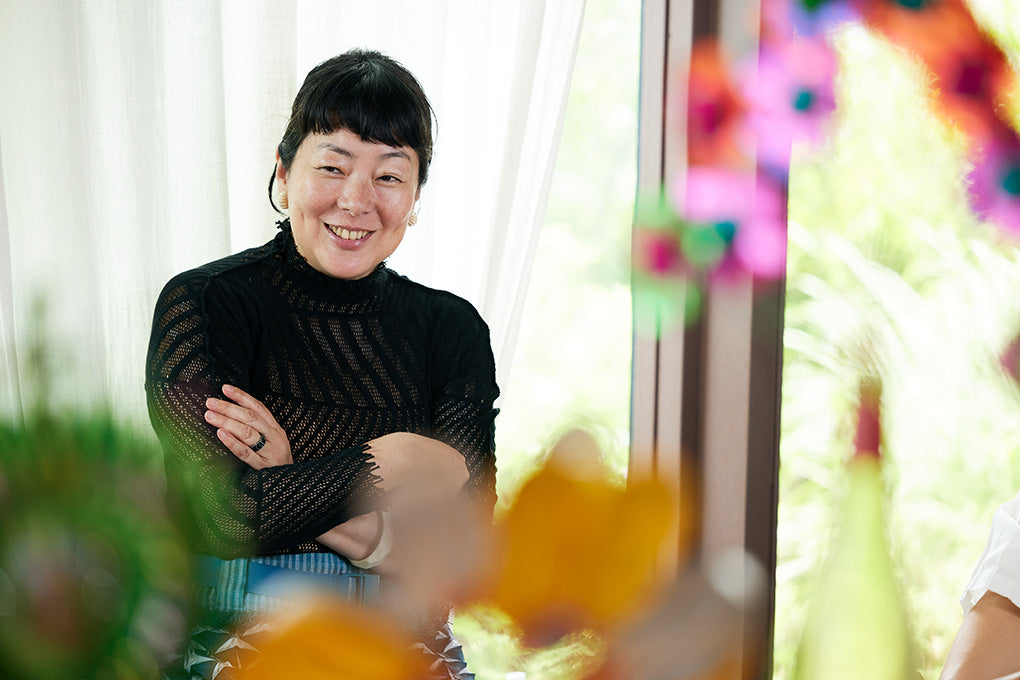
YURI NOMURA
Chef and founder of eatrip. Inspired by her mother who taught hospitality classes, Nomura pursued a career in food. Her work spans producing catering, cooking classes, magazine columns, radio appearances, and event planning, showcasing the broad possibilities of food. She emphasizes producers, wild ingredients, and seasonal freshness, using her cooking to convey the power and richness of food. She runs eatrip soil (Omotesando) and eatrip kitchen (Yutenji) and is the author of “Tobikiri Oishii Ouchi Gohan” (Extraordinarily Delicious Home Cooking, Shogakukan).










